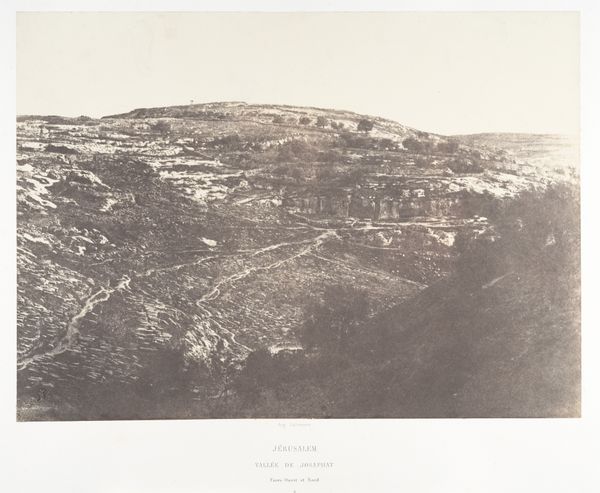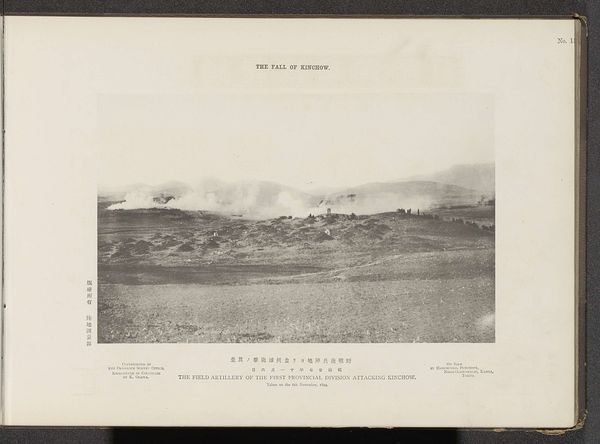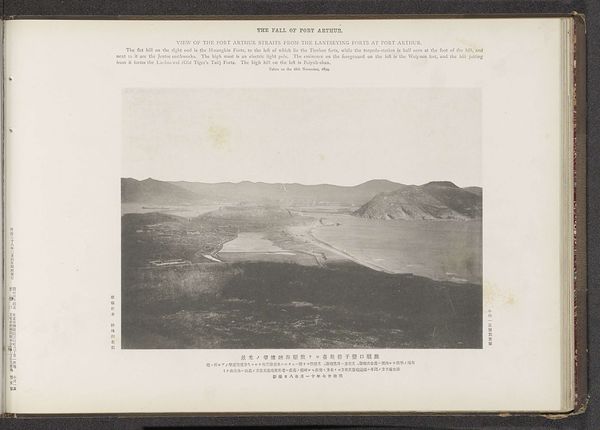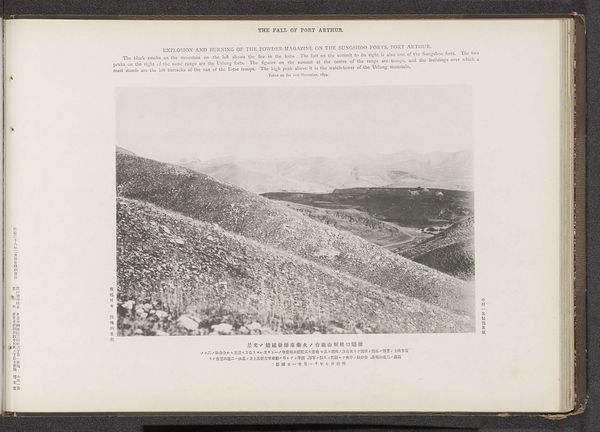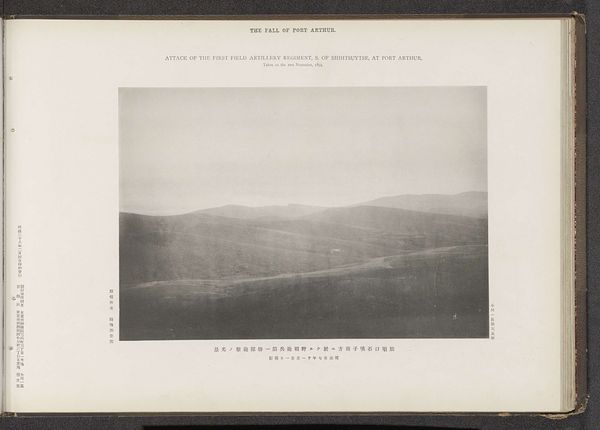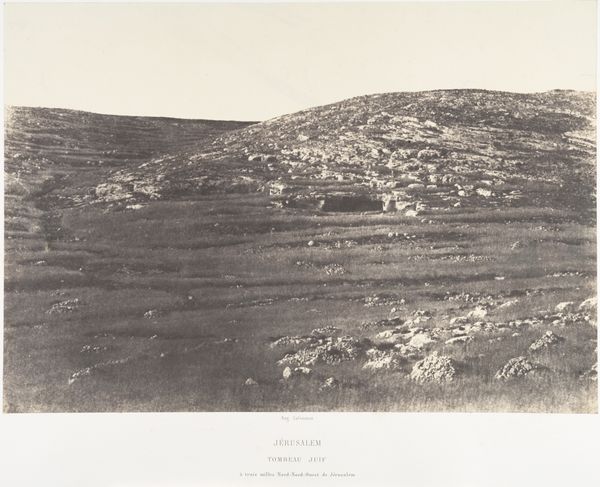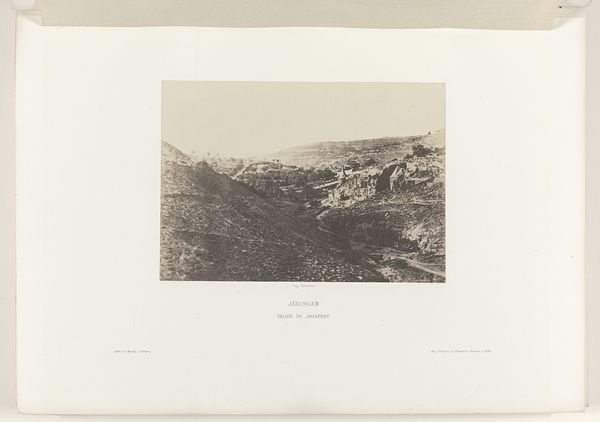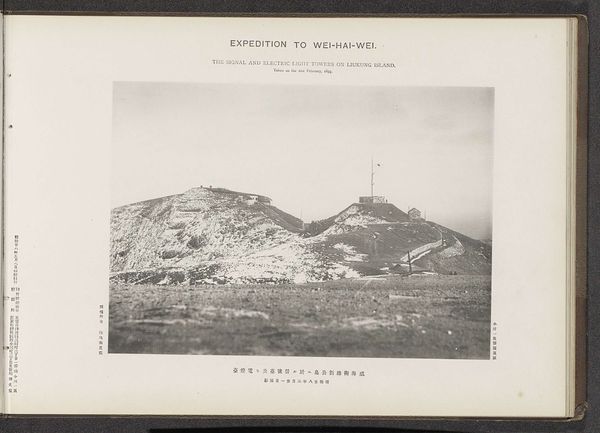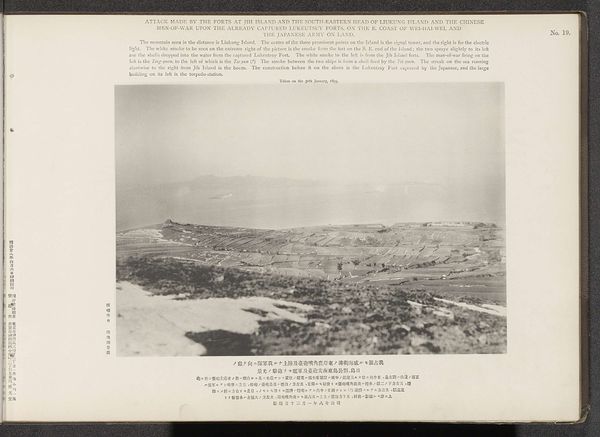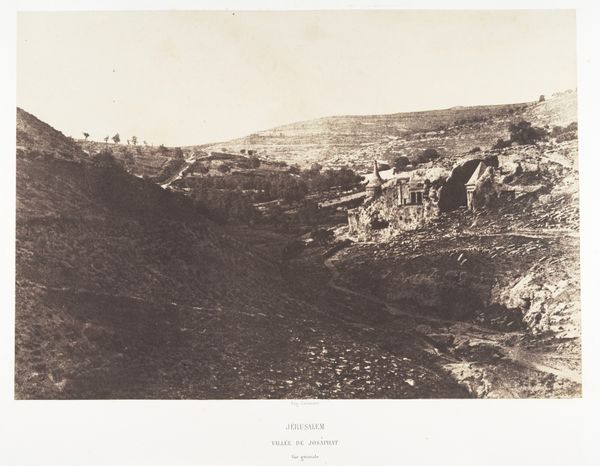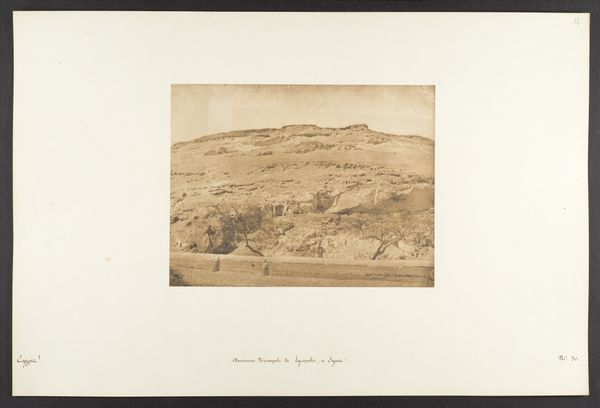
A front view of the principal and east forts of Hwangkin Shan, Port Arthur Possibly 1894
0:00
0:00
print, photography, gelatin-silver-print
# print
#
landscape
#
photography
#
orientalism
#
gelatin-silver-print
Dimensions: height 220 mm, width 280 mm
Copyright: Rijks Museum: Open Domain
This photograph, taken by the Ordnance Survey Office, captures the stark reality of Hwangkin Shan's principal and east forts. In this desolate landscape, we confront the enduring symbol of conflict: the fort. Throughout history, fortified structures have represented both protection and dominance. From ancient hill forts to medieval castles, these imposing forms evoke a primal need for security and territorial control. Consider the ziggurats of Mesopotamia, which, while religious in purpose, also symbolized power and stability in the ancient world. The very act of fortifying, of creating boundaries, speaks to a deep-seated human impulse to define and defend our spaces. This impulse has propelled the construction of walls, both literal and metaphorical, throughout history. Here, the image of the fort, once a symbol of strength, is now a poignant reminder of vulnerability and the cyclical nature of human conflict. It resonates with the psychological impact of war, engaging viewers on a subconscious level with themes of loss and the transience of power. This symbol doesn't progress linearly; it resurfaces, evolves, and takes on new meanings in different historical contexts, reminding us of the enduring impact of conflict on the human psyche.
Comments
No comments
Be the first to comment and join the conversation on the ultimate creative platform.
